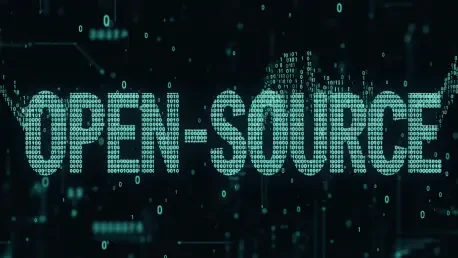What happens when a tech titan, long synonymous with proprietary software, joins forces with the open-source world in a way that reshapes the developer landscape? This is the extraordinary tale of Microsoft’s Windows Subsystem for Linux (WSL), a tool that began as a modest compatibility layer and evolved into a celebrated open-source project. By enabling Linux to run natively on Windows, Microsoft has not only bridged two historically opposing ecosystems but also redefined its own identity in the tech realm. Dive into this compelling journey of innovation, collaboration, and transformation that has captivated developers worldwide.
Why WSL’s Rise Captivates the Tech World
In today’s fast-paced digital environment, where developers navigate a maze of platforms and tools, solutions like WSL stand out as game-changers. The ability to seamlessly operate Linux environments on Windows addresses critical challenges for programmers, system administrators, and cloud engineers who demand efficient cross-platform functionality. More than a technical feat, WSL’s transition to open source signals a seismic shift in how even the largest proprietary giants can embrace community-driven innovation to build trust and meet user needs.
This story transcends mere code—it reflects a broader movement in technology where adaptability and collaboration are paramount. As developer demands shape the tools of tomorrow, Microsoft’s pivot with WSL highlights a commitment to empowering its user base. The significance lies in understanding how such transformations can redefine industry standards and inspire other companies to follow suit.
An Unlikely Partnership: Microsoft and Linux Unite
The alliance between Microsoft and Linux, once considered an improbable dream, marks a turning point in tech history. Decades ago, the notion of Microsoft championing a Linux integration would have been dismissed as fantasy, given the company’s staunch proprietary stance. Yet, with WSL, this partnership became reality, starting as an experiment to bridge Windows and Linux for developers seeking flexibility without abandoning their familiar operating system.
This collaboration didn’t emerge overnight. It required a fundamental rethinking of Microsoft’s approach, prioritizing user accessibility over traditional competitive barriers. By embedding Linux compatibility directly into Windows, Microsoft opened doors for countless professionals to work across ecosystems effortlessly, setting the stage for a deeper engagement with the open-source ethos.
From Humble Beginnings to a Developer Powerhouse
WSL’s journey kicked off with an unexpected origin in Project Astoria, a 2010 initiative aimed at running Android apps on Windows Phone. Though that project faltered, its technical foundation—translating system calls into Windows NT kernel operations—paved the way for WSL 1.0, launched in 2017 with Canonical’s Ubuntu as a key partner. This initial version allowed Linux distributions to operate on Windows, albeit with limitations that soon became apparent to early users.
Performance issues in WSL 1.0 spurred a major overhaul, culminating in WSL 2 by 2020. This iteration introduced a lightweight virtual machine and a custom Microsoft Linux kernel, dramatically boosting speed and usability. The impact was undeniable—by 2025, developer surveys like Stack Overflow’s reported WSL usage soaring from a mere 3% to over 14% as a primary operating system among respondents, showcasing its growing indispensability.
The final leap came with open-sourcing WSL, a process fraught with challenges due to its integration with proprietary Windows components. Years of refactoring and strategic decoupling eventually enabled this milestone, met with explosive community enthusiasm—GitHub stars for WSL doubled to over 30,000 in a single day, dominating tech news platforms like Hacker News for 24 hours straight. This triumph underscored the power of community input in refining and expanding a tool’s potential.
Behind the Scenes: Voices Driving the Change
Insights from Microsoft insiders reveal the depth of commitment behind WSL’s open-source transition. Craig Loewen, Senior Product Manager for WSL, emphasized the dual necessity of this move, noting, “Linux’s strength lies in its community—aligning with it not only builds trust but also enhances value for everyone involved.” This perspective highlights a philosophical shift within the company, prioritizing collaboration over isolation.
Clint Rutkas, Principal Product Manager Lead, echoed this sentiment by reflecting on the community’s response post-release: “The surge in engagement on our repository was proof that every hard choice paid off.” Such feedback from the team illustrates a cultural evolution at Microsoft, where empowering developers often takes precedence over guarding proprietary secrets. The rapid influx of contributions following the open-source announcement further demonstrated how shared innovation can outpace closed-system development.
The impact of these voices extends beyond WSL itself. Their advocacy has influenced other Microsoft projects, setting a precedent for embracing open-source principles where they align with user needs. This internal transformation reveals a willingness to adapt, driven by a clear understanding of the developer community’s pivotal role in shaping technology’s future.
Lessons from WSL: Blueprint for Tech Collaboration
WSL’s path offers valuable strategies for tech professionals and organizations aiming to foster community-driven innovation. One key takeaway is the importance of responding to user feedback—Microsoft’s overhaul of WSL 2 addressed performance complaints head-on, proving that prioritizing real-world needs can transform a tool’s adoption rate. Companies and developers alike can apply this by actively seeking and acting on user input to refine their offerings.
Another lesson lies in designing for collaboration from the outset. WSL’s success as an open-source project shows that building tools with community integration in mind can exponentially increase their reach and impact. For tech leaders, this means architecting solutions that invite contributions, ensuring broader relevance and sustainability in a competitive landscape.
Finally, internal advocacy plays a critical role in driving open-source initiatives within larger entities. The WSL team’s approach—highlighting community benefits, demonstrating business value, and balancing costs with gains—provides a model for making a compelling case to stakeholders. Leveraging data, such as WSL’s GitHub engagement spike, can strengthen arguments for openness, bridging the gap between proprietary traditions and collaborative futures.
Reflecting on a Milestone in Tech Evolution
Looking back, Microsoft’s journey with WSL stands as a testament to the power of adaptation and partnership. What began as a niche experiment rooted in a failed project grew into a cornerstone for developers, breaking down barriers between Windows and Linux. The transition to open source, despite formidable technical and cultural hurdles, marked a defining moment in how tech giants can redefine their roles through community engagement.
The ripple effects of this achievement linger, influencing not just Microsoft’s internal projects but also the broader industry’s approach to collaboration. For developers and companies navigating the ever-shifting tech terrain, WSL’s story offers a clear path forward: embrace user needs, invest in open innovation, and build bridges across ecosystems. As technology continues to evolve, the challenge remains to sustain this momentum, ensuring that tools empower users through shared progress and accessibility.









